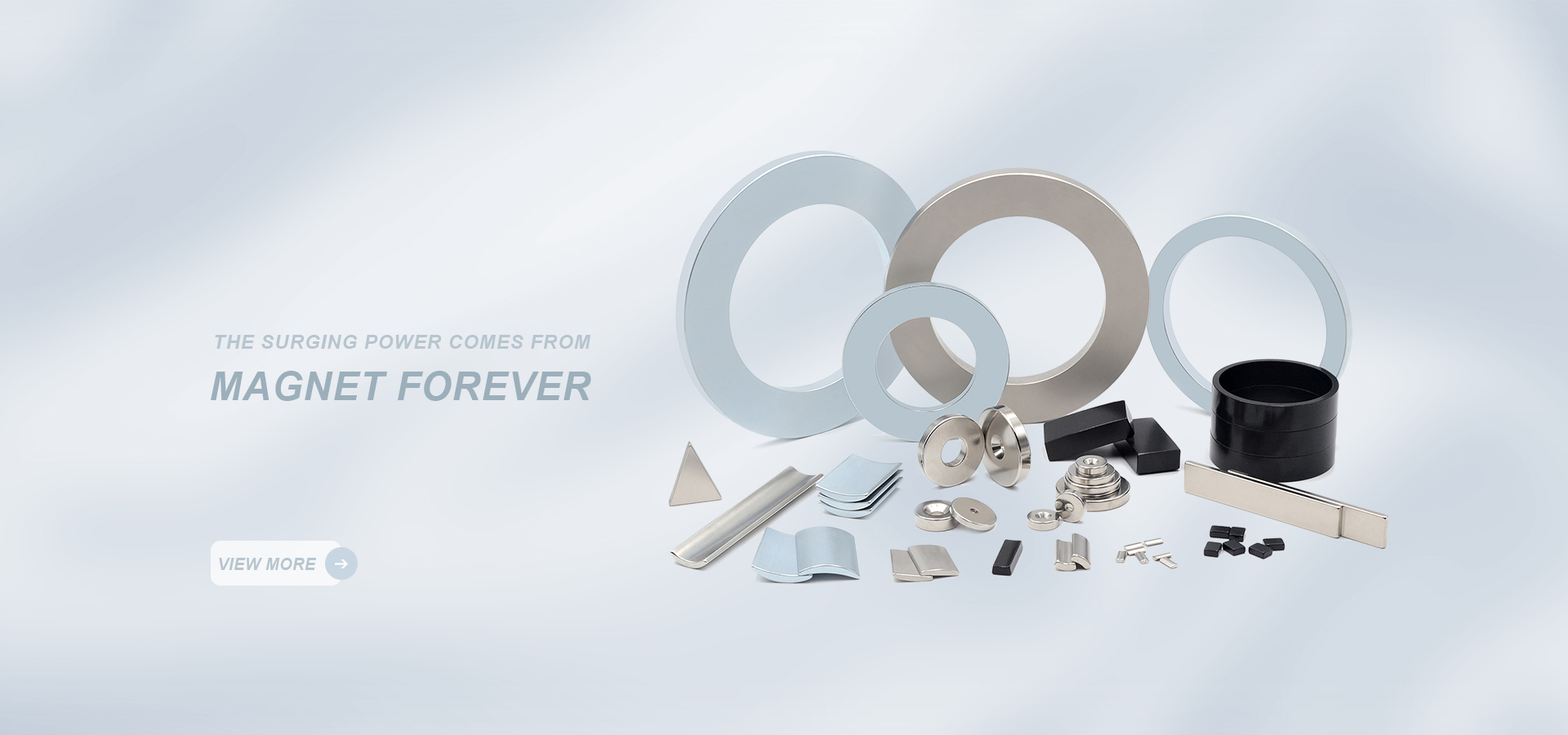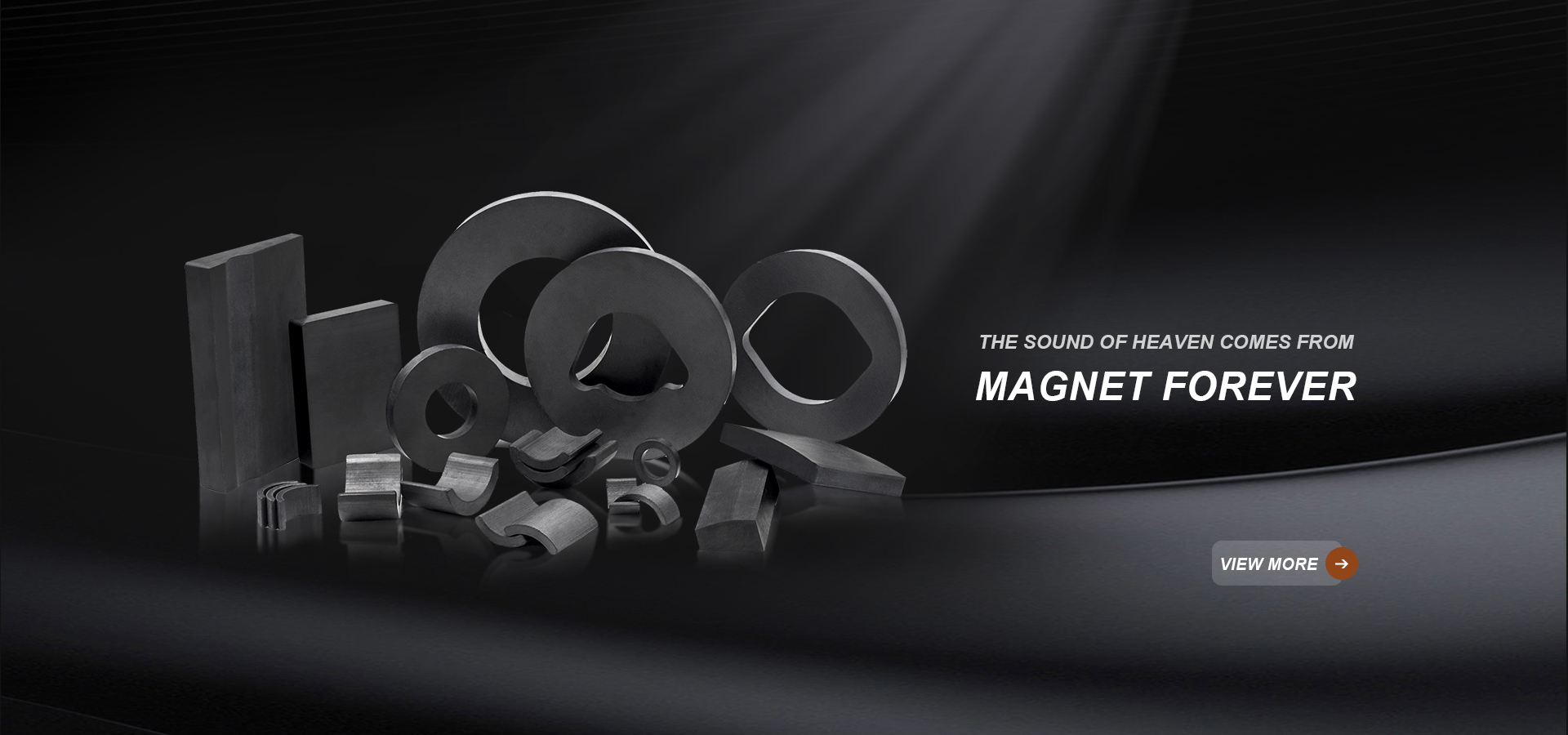How to choose a speaker magnet?
How to choose a speaker magnet?
There are three main types of speaker magnets on the market: AlNiCo, ferrite and NdFeB:
Alnico is the first magnet used in speakers, such as horn speakers in the 1950s and 1960s (known as tweeters). Generally made into internal magnetic horn (external magnetic can also be used). The disadvantage is that the power is small, the frequency range is narrow, it is hard and brittle, and it is very inconvenient to process. In addition, cobalt is a scarce resource, and the price of AlNiCo is relatively high. From the perspective of cost-effectiveness, the use of AlNiCo for speaker magnets is relatively small.
Ferrite is generally made into an external magnetic speaker. The magnetic performance of ferrite is relatively low, and a certain volume is required to meet the driving force of the speaker, so it is generally used in larger audio speakers. The advantage of ferrite is that it is cheap and cost-effective; the disadvantage is that it is large in size, small in power and narrow in frequency range.
The magnetic properties of NdFeB are far superior to AlNiCo and ferrite, and it is the most used magnet in speakers, especially high-end speakers. Its advantages are its small size, high power and wide frequency range under the same magnetic flux. At present, HiFi headphones basically use such magnets. The disadvantage is that it contains rare earth elements, so the material price is high.

Several factors to consider when choosing a speaker magnet
First of all, it is necessary to know the ambient temperature in which the speaker is working, and determine which magnet should be selected according to the temperature. Different magnets have different temperature resistance characteristics and can support different maximum operating temperatures. When the working environment temperature of the magnet exceeds the maximum working temperature, the phenomenon of magnetic performance attenuation and demagnetization may occur, which will directly affect the sound effect of the speaker.
Secondly, the horn magnet should be selected comprehensively considering the magnetic flux requirement and the volume of the magnet. Some people ask whether the louder the speaker magnet, the better the sound? In fact, it is not the case that the loudspeaker is not the bigger the magnet, the better. From the influence of the magnet performance on the sound output quality of the speaker, we can find that the magnetic flux of the magnet has a great influence on the sound quality of the speaker. In the case of the same volume, the performance of the magnet: NdFeB>AlNiCo>Ferrite; under the same magnetic flux Under the requirements of NdFeB magnets, the volume required is the smallest, and the ferrite is the largest. For the same magnetic material (same material and same performance), the larger the diameter, the greater the magnetic induction intensity, the higher the power of the speaker, the higher the sensitivity of the speaker, and the better the transient response. Therefore, it is necessary to comprehensively consider the limitation of the volume of the horn on the volume of the magnet and the requirements for the magnetic flux performance of the magnet to determine which magnetic material to choose.

